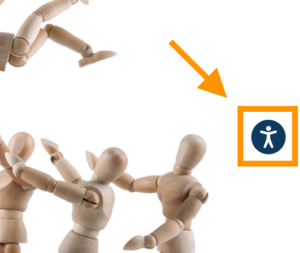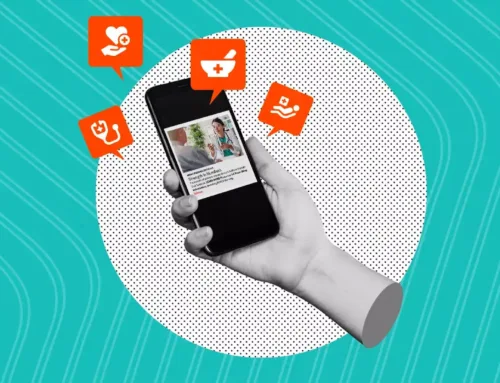May 19 is Global Accessibility Awareness Day!
With more than a billion people with disabilities or impairments worldwide, today is the perfect time to reflect on how we, as business owners, salespeople and marketing professionals, can make our digital spaces more inclusive and accessible environments.
Find out what you can do to make your website accessible for people with disabilities.
1
What is web accessibility?
As the name implies, web accessibility means that your website is able to be accessed by people regardless of barriers or disabilities. From design to development, there are things that you can do to ensure people using adaptive technologies can still have a good user experience, including:
- People who are blind or low vision who use screen readers
- People who are deaf or have hearing loss who require closed captioning
- People with disabilities that affect their physical or motor function who rely on voice commands
- People who have seizures, ADHD or cognitive disabilities
2
Why does my website need to be accessible?
- With more than 1 billion people worldwide experiencing some form of disability, your website may be excluding a huge number of potential customers or employees.
- There are many U.S. laws that specifically address accessibility – including the Americans with Disabilities Act (ADA), Section 508 of the Rehabilitation Act and California’s Unruh Civil Rights Act – as well as international Web Content Accessibility Guidelines (WCAG). Not meeting the criteria for web accessibility may set your organization up for legal action.
- While it’s not directly tied to search engine rankings, many of the things that make a website accessible are also SEO best practices (like meta data and alt attributes).
3
What are the Web Content Accessibility Guidelines (WCAG)?
Web Content Accessibility Guidelines, or WCAG 2.1, are international best practices and protocols that help make the internet more accessible and inclusive. They focus on four main areas of accessibility:
- Is content perceivable using sight, sound and touch?
- Is it operable via mouse, keyboard, sight-assisted navigation and more?
- Are content, instructions and operations easy to understand?
- Is it robust enough to be compatible with assistive technologies?
4
What can I do to make my website more accessible?
Web accessibility involves both design and development. Some things you can do to make your website more accessible include:
- Choose a CMS that supports accessibility (like WordPress)
- Utilize H tag headings to structure your content
- Use descriptive alt text for images to provide context
- Include captions for video and audio
- Be mindful with color choices to maintain a ≥ 3:1 contrast ratio
- Give links descriptive names (no “click here”s)
- Ensure form fields can be navigated to and accessed via keyboard controls
5
What if my website has already been built?
Responsory has partnered with accessiBe, the global leader in web accessibility technology, to help bring your website into WCAG 2.1 compliance. This affordable, two-part solution includes a user interface that allows individuals to adapt their web experience without changing your website’s source code (as seen on our website), as well as AI-powered processes that retroactively enable your site to be navigable by assistive technologies (meaning it’s easy to implement on existing websites).
Because of this partnership, we’re able to offer:
- Free product trials
- Website accessibility audits
- Plugin support for existing WordPress sites
- Recommendations for ongoing accessibility compliance
- Statements of accessibility and legal resources for perceived noncompliance
Want to see how accessiBe works on a live website?
We recommend this product because we believe in it. To see a live demo, just click the accessibility icon on the right hand side of your screen. Once there, its interface makes it easy to customize our web experience for users of all abilities.
Let’s make the Internet a more accessible place. Contact your Responsory team to talk through your accessibility compliance options.







